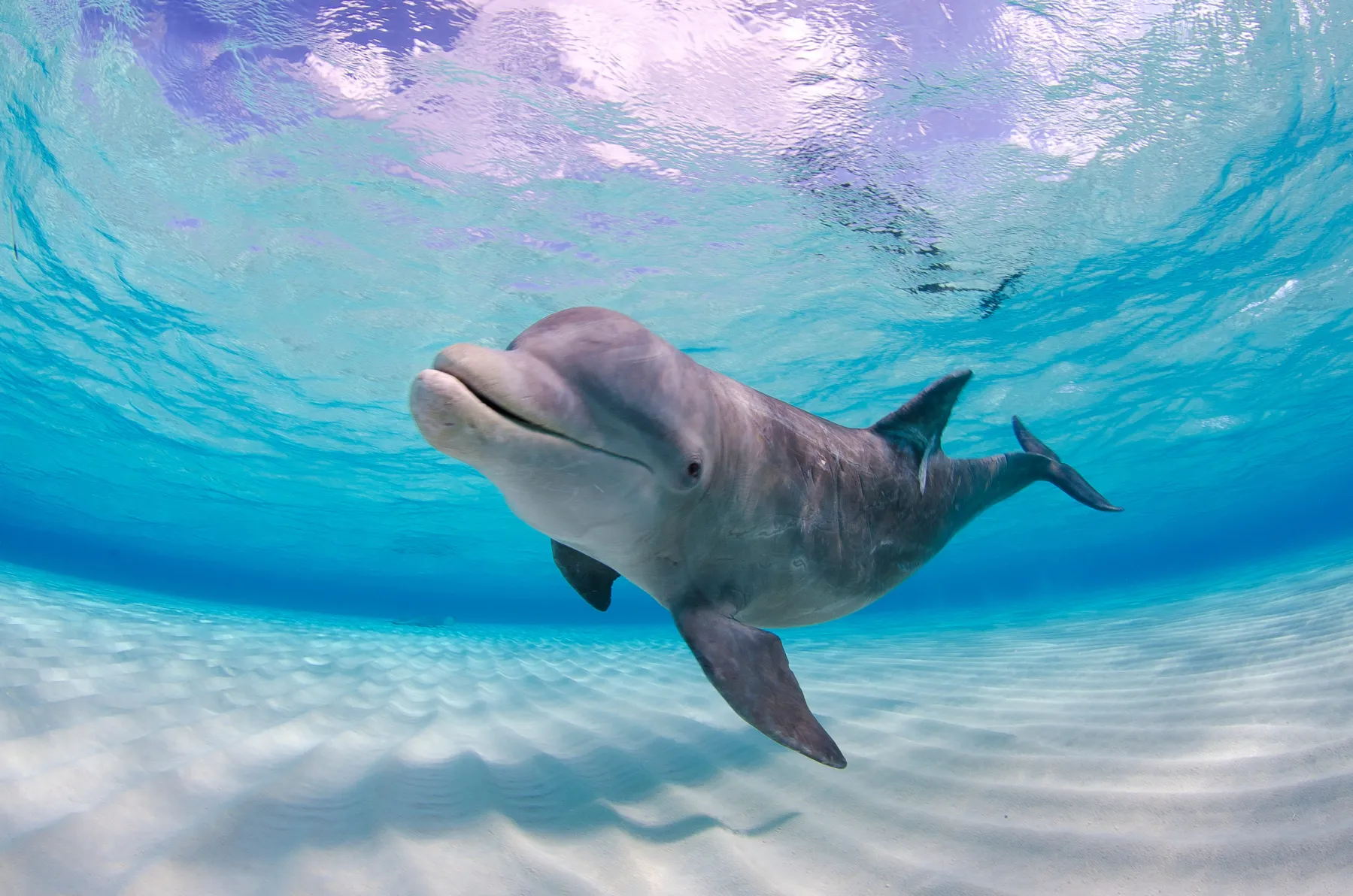The indo-pacific bottlenose dolphins found in wasini are present all year round close to reefs, they have a ‘bottlenose’ beak and are grey on the back and their bellies are a lighter grey or nearly white with grey spots. (which tells you they are not common bottlenose dolphins). They also have large, sickle-shaped dorsal fins.

They surface often to breathe, doing so two or three times a minute.
Bottlenose dolphins travel in social groups and communicate with each other by a complex system of squeaks and whistles. Each dolphin has a special whistle that it creates soon after it is born. This whistle is used for identification, just like a human’s name.
Bottlenose Dolphins also produce high frequency clicks, which act as a sonar system called echolocation. When the clicking sounds hit an object in the water, like a fish or rock, they bounce off and come back to the dolphin as echoes. Echolocation tells the dolphins the shape, size, speed, distance, and location of the object.

These sea mammals feed on fish, squid, and shrimp. A group of dolphins will cooperate to make a mud ring to trap fish. Then, some of the dolphins in the group will wait outside the ring for the fish that try to escape, gulping them up as a snack.

The indo-pacific dolphins grow to be anywhere from 6 to 12 feet long. They shed their outermost layer of skin every two hours.
They love playing around the boats especially on the ride out to the Kisite Marine Park.



